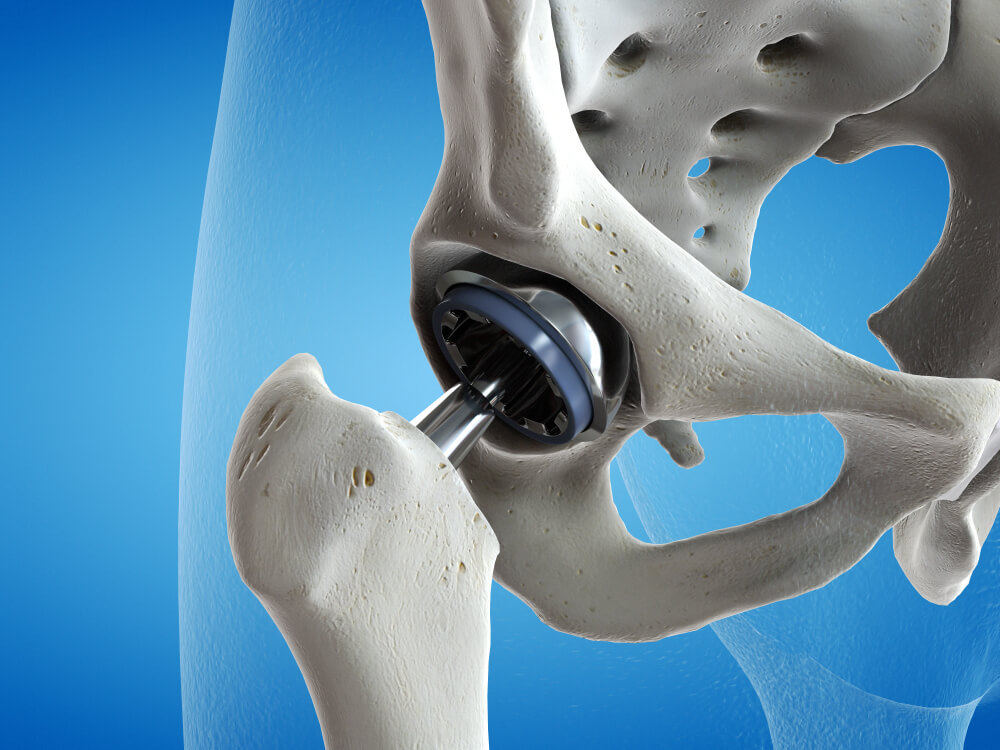The hip is one of the body’s most important joints. It plays an important role in nearly every basic function, from sitting and standing, to walking and bending. Most people are born with healthy hip joints that facilitate a wide motion range without pain or discomfort. But over time, one or both hips can develop complications that stiffen the joints and cause significant discomfort on a day to day basis. Rather than cope with more physical limitations, discomfort, and a less active lifestyle, many patients turn to orthopedic surgeons to undergo a hip replacement. Today’s minimally invasive hip replacement procedures make it possible for patients to achieve restored joint function with as little inconvenience as possible.
The Direct Superior Approach
The Direct Superior Approach to a hip replacement is a minimally invasive technique that Dr. Koth offers. Dr. Koth was one of the first doctors trained by the developers of this technique in 2013 and is only utilized by a limited number of surgeons within the United States.
Specialized instruments and retractors are used to allow Dr. Koth to manipulate the hip joint without having to enter the muscles surrounding this area. The goal is to perform the same hip replacement procedure, without having to detach or disrupt key muscle groups. This allows the patient to resume work and normal activity within weeks as opposed to months with other procedures. Due to the minimally invasive nature, patients see a significantly decreased use of narcotics and do not require physical therapy.
How it works:
A smaller incision at the upper side of the hip helps the surgeon avoid cutting (and then reattaching) the key muscle group that enables you to walk and bend.1 That muscle group includes the IT band (or Iliotibial band) and the external rotators that connect your pelvis to your knee1. Avoiding injury to that group of muscles and ligaments may potentially mean better hip stability and recovery.
Frequently Asked Questions
Am I a candidate for a hip replacement?
You may be a candidate for a hip replacement if you have severe joint damage or a joint disease that causes chronic and debilitating pain. Individuals who are at high risk for infection or who suffer from chronic health issues, such as morbid obesity, may not be eligible for this procedure. Only a consultation with your orthopedic surgeon can determine whether hip replacement is right for you.
What should I expect during a hip replacement?
You’ll be placed under general anesthesia for your hip replacement. During the procedure, and incision is made in your hip, through which diseased bone and other tissues are removed. The artificial hip parts are either cemented in place or else fixated in a way that will encourage your biological bone to fuse with the artificial hip. Most procedures take no more than an hour, with many patients going home in as little as 1 or 2 days.
What should I expect during the recovery period?
You will not be released from the hospital until you can safely get in and out of bed on your own, as well as perform a normal daily task by yourself. It is normal to experience pain and swelling in the first few days and weeks following your surgery. However, discomfort should subside with time. Be sure to take all medications exactly as prescribed and attend your follow-up appointments with your surgeon. Keep in mind that drug, cigarette and excessive alcohol use can complicate the recovery process and affect the outcome of your surgery.



